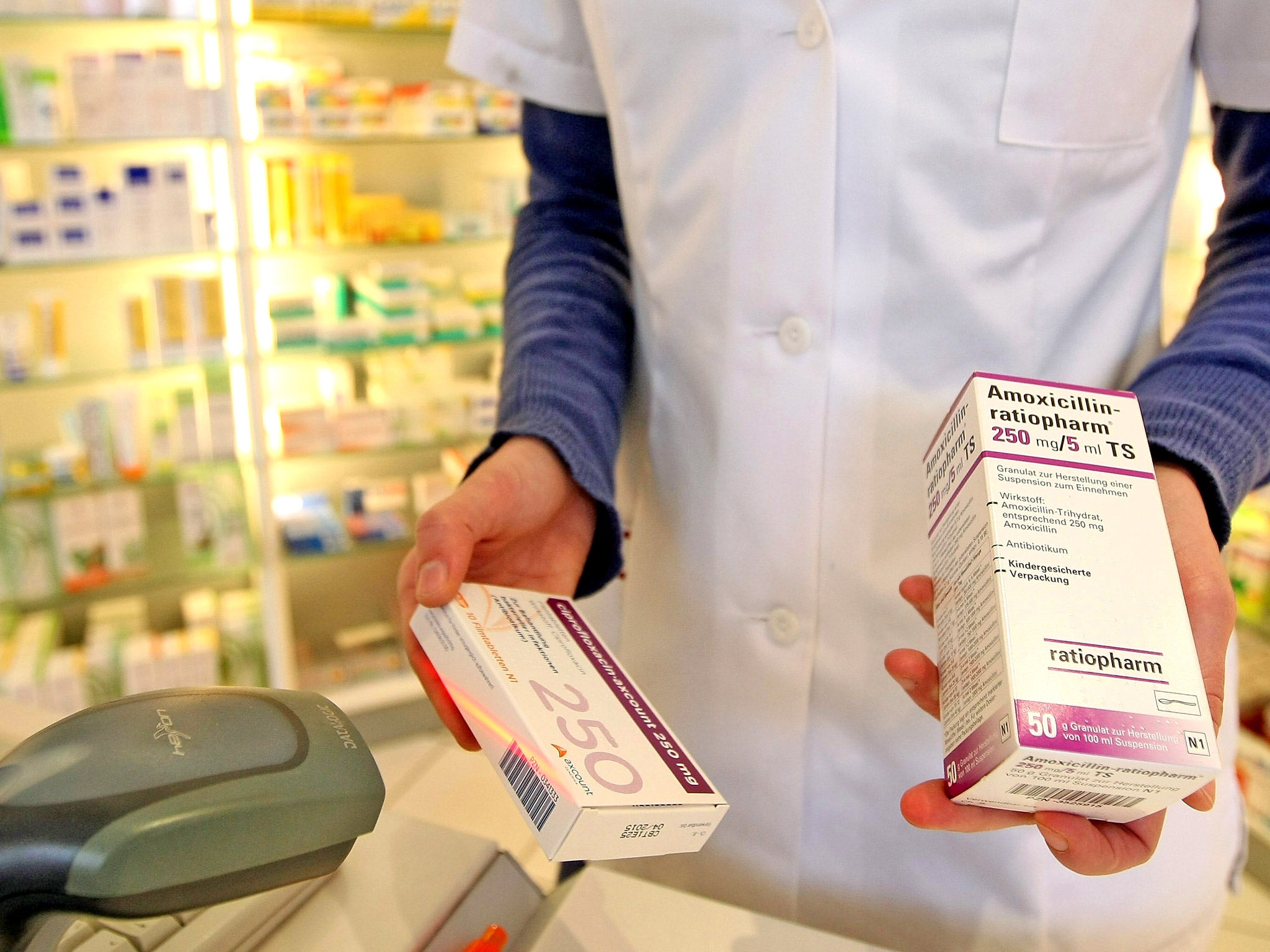800 samples showed antibiotic resistance last year, says agency as it backs Chief Medical Officer's warning

Your support helps us to tell the story
From reproductive rights to climate change to Big Tech, The Independent is on the ground when the story is developing. Whether it's investigating the financials of Elon Musk's pro-Trump PAC or producing our latest documentary, 'The A Word', which shines a light on the American women fighting for reproductive rights, we know how important it is to parse out the facts from the messaging.
At such a critical moment in US history, we need reporters on the ground. Your donation allows us to keep sending journalists to speak to both sides of the story.
The Independent is trusted by Americans across the entire political spectrum. And unlike many other quality news outlets, we choose not to lock Americans out of our reporting and analysis with paywalls. We believe quality journalism should be available to everyone, paid for by those who can afford it.
Your support makes all the difference.Drastic warnings from the Government’s Chief Medical Officer about the coming threat from antibiotic-resistant bacteria were echoed today by the Health Protection Agency.
The agency supported the call by Dame Sally Davies for antibiotic resistance to be treated as a major national risk on a par with climate change or terrorism, and produced data of its own graphically illustrating how rapidly the threat was rising.
Figures from the HPA’s Antimicrobial Resistance Reference Laboratory show that in 2003 there were three samples which tested positive for antibiotic resistance – but last year, there were 800.
“It is this dramatic rise in the numbers of cases that warrants active intervention not just from Government, but also from healthcare institutions, the pharmaceutical industry, patients and the general public, to address this very serious problem,” the HPA said.
Publishing her first annual report, Dame Sally said that the threat of drugs becoming useless through resistance was so great that if it were not tackled, in 20 years’ time routine surgery might involve a serious risk of death, and Britain would have a health system comparable to that of 200 years ago.
Yet, she said, there was a “discovery void” of innovative drugs, and new antibiotics were not being developed at a sufficient rate to replace the ones that were falling out of use – because there was not enough profit in antibiotics for major pharmaceutical companies.
Backing Dame Sally’s call for an enhanced effort at drug development, the HPA said: “The growth in resistance is not new and has been developing over a period of years both in Europe and elsewhere. As well as more established strains of resistance new ones have emerged from South East Asia and have spread, due to international travel, all over the world.
“Today, patients who test positive for an antibiotic resistant infection can still be treated with other antibiotics. However there is a very real concern that this may not be the case in the future.”
Professor Anthony Kessel, the HPA’s Director of Public Health Strategy and Medical Director, added: “We are very pleased that the Chief Medical Officer is giving the issue of antibiotic resistance her full attention.
“This is not a clinical issue but a societal one and we must change our attitude towards antibiotics. They certainly have their place for treating bacterial infections, but too often are given for viral illness which contributes towards the problems we are facing today. This will require more awareness raising and education both for clinicians and the public on how they use the antibiotics that we have.”
He added: “The HPA has been working very hard on this issue for some time and has committed great resource to devising strategies and advice on treatment, infection control and patient management. We cannot eliminate this problem but we can put in successful strategies to manage it and minimise its impact and keep our antibiotics safe for the future.”
Join our commenting forum
Join thought-provoking conversations, follow other Independent readers and see their replies
Comments